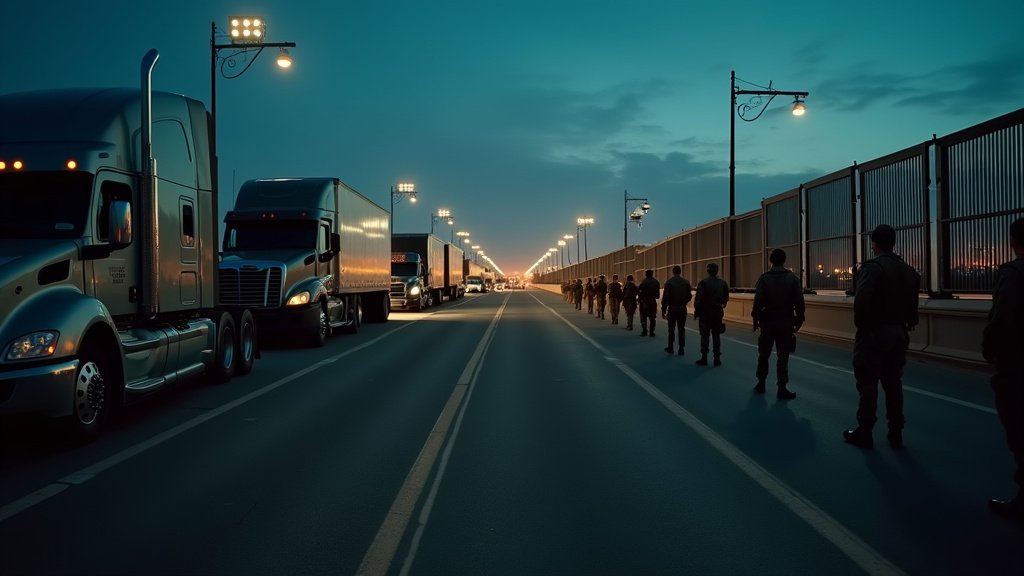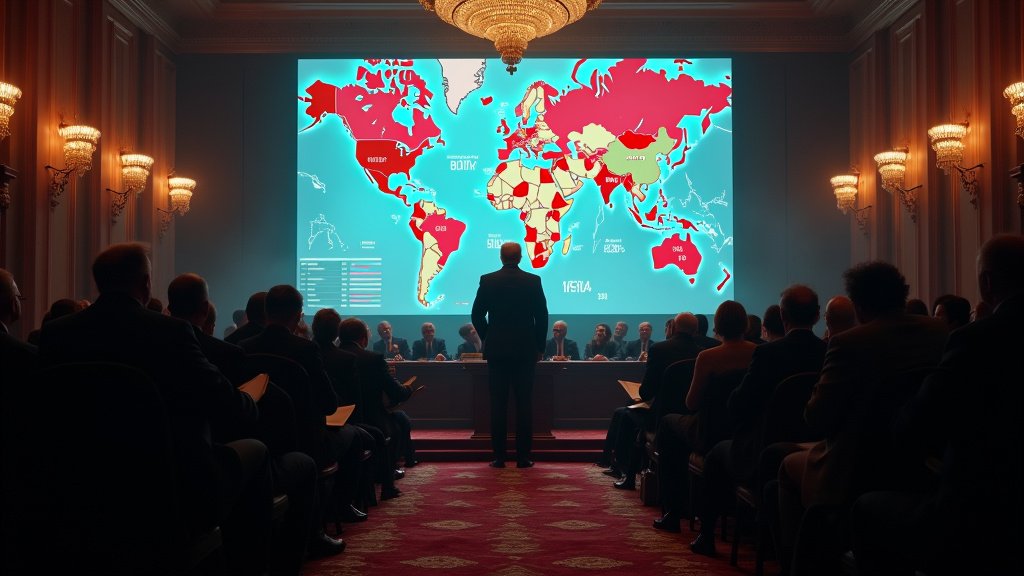The Texas-Mexico border has always been a focal point of U.S. immigration policy, and under the Trump administration, it gained national and global attention. Years after Donald Trump’s presidency, his policies and rhetoric continue to echo through Texas’s political landscape. From border wall debates to Title 42 enforcement, Texas remains the epicenter of contentious discussions on immigration, national security, and U.S.-Mexico relations. But why does Trump’s legacy still cast such a long shadow here, and how are these dynamics shaping the state today?
At its heart, the issue isn’t just about border security. It’s a mix of economics, demographics, and the intertwined histories of Texas and Mexico. Here’s how Trump’s border policies and their aftermath have defined the region.
The Border Wall: Symbolism or Security?
When Donald Trump launched his campaign for the presidency in 2015, one of his cornerstone promises was to “build the wall.” The wall quickly became a potent symbol of his administration’s tough stance on immigration. But in Texas, the debate over the border wall is far from over.
The Trump administration constructed approximately 450 miles of the border wall, with significant portions in Texas, particularly in regions like the Rio Grande Valley. Despite this progress, the wall remains incomplete. While some see the structure as an effective tool to deter illegal crossings and enhance national security, others view it as a misguided and wasteful project that ignores the complex realities of border life.
For local landowners, the wall is more than just a political issue—it’s a personal one. Eminent domain lawsuits have surged as the federal government sought to seize private land to continue construction. Many Texans, especially ranchers and farmers, have spent years battling the government in court, arguing that their livelihoods are at stake. Beyond that, critics highlight how the wall disrupts wildlife migration patterns, alters water flow in sensitive ecosystems, and undermines local tourism in border towns that thrive on a sense of binational unity.
On the other hand, Republican leaders like Texas Governor Greg Abbott have championed the wall as a critical measure to curb illegal immigration. Abbott has taken it a step further by using state funds to continue construction where federal efforts ceased. The move has sparked debates about states’ rights and the extent to which Texas should bear the financial burden of what many argue is a federal responsibility.
Title 42 and Its Aftermath
Another hallmark of Trump’s border policy was the implementation of Title 42, a public health measure allowing the U.S. to expel migrants during the COVID-19 pandemic. Though initially framed as a temporary measure to prevent the spread of the virus, it became one of the administration’s primary tools to restrict asylum claims.
For Texas, Title 42 had immediate and far-reaching effects. Migrants expelled under this policy often found themselves stranded in Mexican border cities, creating a humanitarian crisis. Shelters in places like Matamoros and Reynosa swelled with families who had been turned away, many of whom faced violence and exploitation at the hands of cartels and human traffickers.
The policy also created a cycle of repeated border crossings. Migrants who were expelled under Title 42 often tried to cross again, resulting in higher apprehension rates. For Texas border towns like El Paso, McAllen, and Brownsville, this meant a constant influx of migrants, placing enormous strain on local resources. Law enforcement, healthcare systems, and non-profits struggled to keep up with the demands of managing both humanitarian aid and security concerns.
Although the Biden administration sought to end Title 42, efforts were met with fierce opposition from Republican-led states, including Texas. Lawsuits and legal wrangling kept the policy in place for far longer than many expected, leaving border communities caught in a perpetual state of uncertainty. Even after its eventual expiration, the question of what comes next remains unanswered, with both federal and state governments divided on how to address the underlying challenges of migration.
Economic Interdependence with Mexico
Despite the fiery rhetoric around border security, Texas and Mexico share an unbreakable economic bond. The state’s economy is deeply tied to its southern neighbor, with trade forming a cornerstone of this relationship. Mexico is Texas’s largest trading partner, and the numbers are staggering: in 2022 alone, trade between the two accounted for over $240 billion. This economic symbiosis plays out daily at bustling ports of entry like Laredo, El Paso, and Brownsville, which handle everything from machinery and vehicles to fresh produce.
Under Trump, the renegotiation of the North American Free Trade Agreement (NAFTA) into the United States-Mexico-Canada Agreement (USMCA) introduced significant changes. The updated agreement sought to modernize trade rules, particularly in the automotive and labor sectors, but it also created uncertainty for businesses reliant on cross-border commerce. For Texas, the stakes were particularly high. The state’s manufacturing and agricultural sectors depend on seamless trade with Mexico, and disruptions—whether from policy changes or border slowdowns—can have ripple effects across the economy.
However, trade isn’t just about numbers; it’s about people. Thousands of Texans work in industries directly tied to Mexico, from trucking and logistics to retail and agriculture. Border cities like McAllen and Laredo are hubs of cultural and economic exchange, where the line between Texas and Mexico often feels more symbolic than real. Even amidst political tensions, this interdependence underscores a simple truth: what happens in Mexico profoundly impacts Texas, and vice versa.
The Human Cost: Migrant Stories
Beyond policies and politics, the Texas-Mexico border is a human story. Migrants from Central America, Mexico, and beyond make perilous journeys in search of a better life, risking everything to escape violence, poverty, and persecution. These stories are deeply personal, yet they also reflect broader systemic issues.
During Trump’s presidency, the “zero-tolerance” policy on immigration led to widespread family separations. Thousands of children were taken from their parents, sparking outrage and drawing international condemnation. Images of children in cages and reports of overcrowded detention facilities became seared into the public consciousness, galvanizing activists and reigniting debates about the morality of U.S. immigration enforcement.
For Texas, the fallout was particularly acute. Detention centers in the state, like the infamous facility in Tornillo, became symbols of the broader crisis. Meanwhile, migrant shelters and non-profits along the border stepped in to provide aid where federal systems fell short. Organizations like Catholic Charities and the Texas Civil Rights Project have worked tirelessly to reunite families, provide legal assistance, and offer basic necessities to those stranded in limbo.
Yet, the challenges persist. Even as federal policies shift, migrants continue to face harrowing conditions, both during their journeys and upon reaching the U.S. border. Stories of exploitation, abuse, and tragedy serve as a stark reminder of the human cost of immigration policies that prioritize enforcement over compassion.
Trump’s Enduring Influence in Texas Politics
Donald Trump may no longer be in office, but his influence in Texas politics is unmistakable. From his tough-on-immigration stance to his broader “America First” agenda, Trump’s policies have left an indelible mark on the state. Republican leaders like Governor Greg Abbott and Senator Ted Cruz have embraced Trump’s playbook, using it to galvanize their base and advance their own political ambitions.
For many Texans, Trump’s rhetoric about border security and immigration resonates deeply. The state’s proximity to Mexico makes these issues feel immediate and urgent, and Republican leaders have capitalized on this sentiment. Policies like Operation Lone Star, which deploys state resources to the border, reflect the continuation of Trump-era strategies at the state level.
At the same time, Texas is changing. The state’s growing Hispanic population, much of which has roots in Mexico, represents a powerful and increasingly influential demographic. Many in these communities view Trump’s policies as hostile and divisive, creating opportunities for Democratic candidates to make inroads by emphasizing inclusion and reform. The result is a state caught in a political tug-of-war, with the legacy of Trump shaping both sides of the aisle.
Conclusion: Navigating a Complex Border Future
The Texas-Mexico border is more than just a line on a map; it’s a dynamic region shaped by history, culture, and economics. While Trump’s policies have left an indelible mark, the future of the border depends on balancing security with humanity, politics with pragmatism. Texas finds itself at the forefront of this challenge, navigating the complexities of a border that is as much about connection as it is division.
As Texas continues to grapple with these challenges, one thing is clear: the border isn’t just a local issue. It’s a national conversation that defines who we are as a country and how we engage with our neighbors. For Texans, that conversation is as urgent and complex as ever.
FAQs
- What was Title 42, and how did it impact Texas?
Title 42 allowed the U.S. to expel migrants during the COVID-19 pandemic, creating repeated crossing attempts and humanitarian crises along the Texas-Mexico border. - How much of Trump’s border wall was completed in Texas?
About 450 miles of the wall were built, with Texas hosting significant portions. However, much of the wall remains incomplete. - Why is Texas economically tied to Mexico?
Mexico is Texas’s largest trading partner, with billions in goods crossing the border daily. Trade supports industries like manufacturing, logistics, and agriculture. - What are the environmental concerns regarding the border wall?
The wall disrupts ecosystems, threatens endangered species, and alters natural water flows in sensitive border regions. - How has Texas responded to immigration challenges post-Trump?
Texas continues to enforce strict immigration measures, with Governor Abbott funding additional border wall construction and deploying state resources to bolster enforcement.






